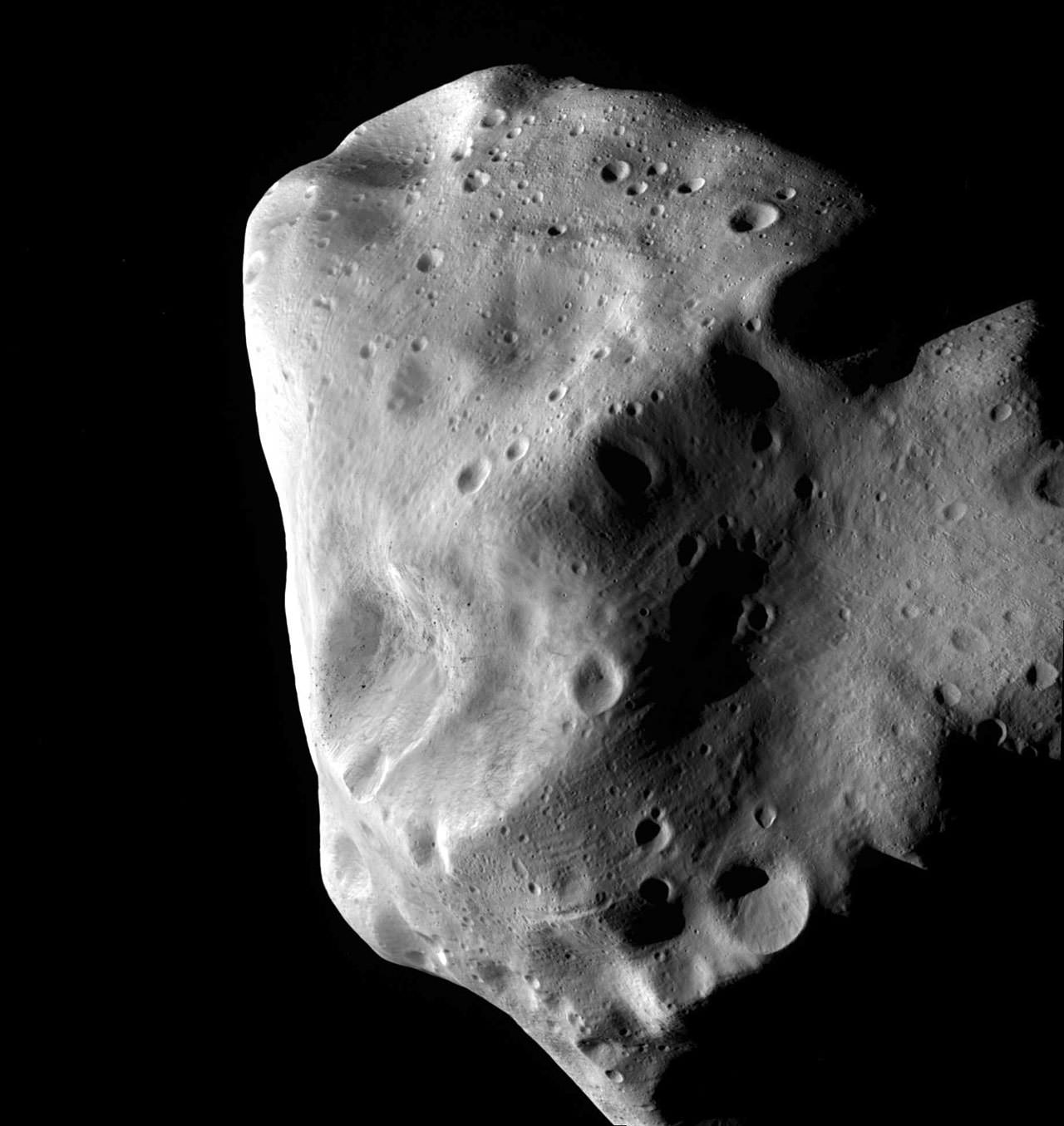[/caption]
According to data received from ESA’s Rosetta spacecraft, ESO’s New Technology Telescope, and NASA telescopes, strange asteroid Lutetia could be a real piece of the rock… the original material that formed the Earth, Venus and Mercury! By examining precious meteors which may have formed at the time of the inner Solar System, scientists have found matching properties which indicate a relationship. Independent Lutetia must have just moved its way out to join in the main asteroid belt…
A team of astronomers from French and North American universities have been hard at work studying asteroid Lutetia spectroscopically. Data sets from the OSIRIS camera on ESA’s Rosetta spacecraft, ESO’s New Technology Telescope (NTT) at the La Silla Observatory in Chile, and NASA’s Infrared Telescope Facility in Hawaii and Spitzer Space Telescope have been combined to give us a multi-wavelength look at this very different space rock. What they found was a very specific type of meteorite called an enstatite chondrite displayed similar content which matched Lutetia… and what is theorized as the material which dates back to the early Solar System. Chances are very good that enstatite chondrites are the same “stuff” which formed the rocky planets – Earth, Mars and Venus.
“But how did Lutetia escape from the inner Solar System and reach the main asteroid belt?” asks Pierre Vernazza (ESO), the lead author of the paper.
It’s a very good question considering that an estimated less than 2% of the material which formed in the same region of Earth migrated to the main asteroid belt. Within a few million years of formation, this type of “debris” had either been incorporated into the gelling planets or else larger pieces had escaped to a safer, more distant orbit from the Sun. At about 100 kilometers across, Lutetia may have been gravitationally influenced by a close pass to the rocky planets and then further affected by a young Jupiter.
“We think that such an ejection must have happened to Lutetia. It ended up as an interloper in the main asteroid belt and it has been preserved there for four billion years,” continues Pierre Vernazza.
Asteroid Lutetia is a “real looker” and has long been a source of speculation due to its unusual color and surface properties. Only 1% of the asteroids located in the main belt share its rare characteristics.
“Lutetia seems to be the largest, and one of the very few, remnants of such material in the main asteroid belt. For this reason, asteroids like Lutetia represent ideal targets for future sample return missions. We could then study in detail the origin of the rocky planets, including our Earth,” concludes Pierre Vernazza.
Original Story Source: ESO News Release.


That rock!
That paper!
That scissors?!
Well, actually, it should be those scissors (plural).
lizard spock
Touché!
the stick of dynamite lol in reply torbjoin larsson and cosmic_collisions and ivan3man_at_large
“A piece of Earth” is maybe a bit misleading. Lutetia was never part of the Earth, but the Earth possibly formed from the same material as Lutetia.
However, meteoriticists have known for a long time that you cannot form the Earth from enstatite chondrite material alone. Yes, enstatite chondrites have the same oxygen isotope composition as the Earth – but that doesn’t do the trick, because Earth is not made up of oxygen alone, and in other elements the match isn’t as good.
Regarding a sample return mission: that would probably just be a very expensive piece of enstatite chondrite… There might be better targets.
But it would be the current best lead on bodies that constituted the terrestrials, wouldn’t it?
I can see how more bodies gets into it, and the new findings on inner system comets open up for a large volume of collection for volatiles for example. But Vernazza seems to me to have a point, if we want to observe the differentiation process in terrestrials which should be an amazing and unexpected (at least for me) boon!
On that token, do you have any good references on enstatites? I just got interested but know nothing about them. Maybe I need to start with chondrites in general?
It seems there are hints of a lot more collisions and orbital changes in our solar system than perhaps was originally contemplated from nebula theory. There’s probably an unexpected story to be told by the asteroids which could be the key to Earth, Moon and even why we are all here. Given their potential resource benefits and the possibility of making space exploration pay for itself, I hope we go visit them very soon.
The current popular theory seems to be the Nice model, which indeed builds on orbital changes from orbital resonances and momentum exchanges with the disk.
Didn’t the Sumerians claim that the asteroid belt, the comets and asteroids of our Solar System, were all originally part of Earth before it was smashed by one of the Moons of Nibiru? I believe they did!
No they didn’t.